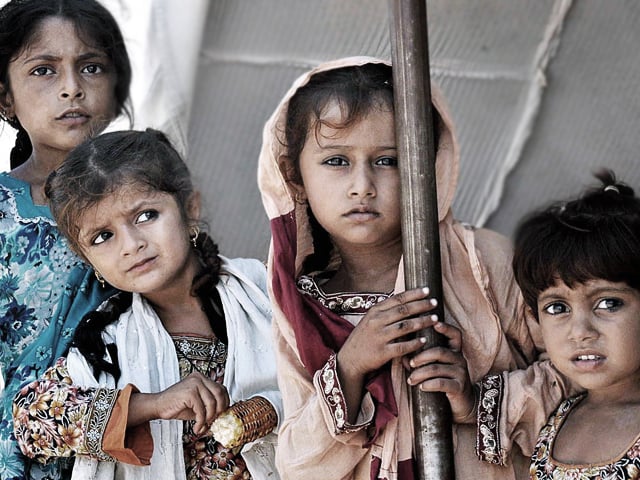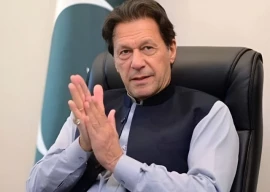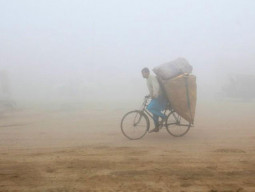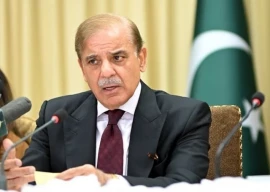
While the Pakistan Muslim League (PML) is finalising the make-up of its government, an array of challenges is staring the party in the face, with the most crucial one being the education emergency in the country.
Official figures are not very encouraging: Over 27 million students are out of school, of which 7 million have not even received any form of primary education.
Troublesome findings
According to an official at the ministry of education and training, low enrollment and high dropout rate are the two main problems that must be dealt with immediately. A whopping 13.5 million out-of-school children are in Punjab.
The ministry’s research reveals that in Balochistan, Khyber-Pakhtunkwa and Fata, poverty kept the young boys out of school, while the patriarchal system discouraged the girls.
Recent data from the Status of Education Report (ASER) of 2012 paints an even bleaker picture. According to its findings, 23% of rural and 7% of urban children, aged 6-16, are not in schools, with girls lagging significantly behind boys in the rural areas. Furthermore, primary schools, on average, have 2.3 classrooms – of these schools, only 50% have working toilets while only 61% have usable water.
Similarly, the Global Monitoring Report 2012 has marked Pakistan on the second highest spot amongst the countries with the most out-of-school children.
The UNDP Millennium Development Goals report states that Pakistan will not be able to achieve its education goals until 2015. Approximately 50% of enrolled children drop out before completing primary education.
Dismal state of early education
For the last several years, political leaders have stood by while 63% of pre-primary age children do not attend school. Of those that do, 71% are enrolled in public institutions and 29% in private institutions.
Provincial figures for this age group – children 3 to 5 years of age – are even more alarming. Even in Punjab, which boasts the lowest pre-primary out-of-school rate, 50% children are not enrolled. Balochistan tops this list, with 78% of the children not attending school.

Looking to the future
Pakistan’s literacy rate is currently 54% -- 66.25% for males and 41.75% for females.
Pakistan Muslim League-Nawaz, which has won a sweeping majority in this electoral round, has vowed to address this and claims that it will raise the rate to 80%.
However, the party should be prepared for a bumpy ride ahead. During the last five years, the previous government kept lowering its GDP allocation for education. In 2008, it stood at 23.9%; currently, it is 2.2%.
So far, nine education policies have been announced by successive governments, though the major portions of the policies remain unchanged each time around.
According to the ministry of education and training, work is under way to formulate innovate plans, which include taking mosques and madrassas into the fold. These plans have been encouraged by the UN Education Scientific and Cultural Organisation.
The ministry also stated that meeting Pakistan’s MDGs for education requires an estimate of one thousand billion rupees. “This is why we need to significantly increase the budget to enroll out-of-school children,” said an official.
In 2010, Article 25-A was added to the Constitution, in the 18th Amendment, called The Right to Free and Compulsory Education Bill 2012. It stated that “the state shall provide free and compulsory education to all children of the age of five to sixteen years in such manner as may be determined by law.”
Since the devolution of education ministry that year, all provinces have been responsible for education-related policies and their implementation. However, only two provinces-Punjab and Sindh-and Islamabad Capital Territory passed the law.
Published in The Express Tribune, May 18th, 2013.
COMMENTS (14)
Comments are moderated and generally will be posted if they are on-topic and not abusive.
For more information, please see our Comments FAQ

















@Ponting: It was never even 3.9. It was 2.9%
@salman: It is not the mass transport infrastructure which is a barrier to investing more in education but rather the inordinate expense in defense. Without looking at the big elephant in the room, the resource scarcity issue will not be addressed.
"In 2008, it stood at 23.9%; currently, it is 2.2%."
This is factually incorrect. Please correct the figure for 2008 in the article. Your other article states this as 2.9pc.
"During the last five years, the previous government kept lowering its GDP allocation for education. In 2008, it stood at 23.9%; currently, it is 2.2%."
The above statement needs to be checked in the write-up. Pakistan has never spent 23.9% on Education. A study by Mazhar (2010) describes that the highest public expenditure on education in Pakistan was 2.80% of GDP in 1987-88. The budgetary allocation to education has remained around 2% of GDP for the past decade while While UNESCO recommends to all member states for spending, at least, 6% of the GDP for education,
We should give education in islamic studies and shario laws for our girls first. Modern education corrupts our females.
Who cares? We want bullet train! :)
True it is a big challange. Let us see how PML(N) tackles it with false degree holders included in policy making. In fact nationalism required for it. Hope new elects will show it. While making policies do include the real moral and ethical education lessons also to the new generation of this country.
Seriously, this is biggest challenge for new the government. They must must ensure increase in education budget. Government school infrastructure in small cities and down demands great attention so as teacher absenteeism and problem of political recruitment of 3rd class teachers in the past. PTI chief was very vocal about education with example of his university, so let see how they handle KP education problems. However, one thing is confirm this is national cause and all political forces across the board should fight for this cause and they can set a direction in five years, at least.
It's a real shame for us as pakistanis, a utter failure as a nation or should a call it a dilemma for nation, who has not been able to adress this huge problem since inception of this so called country "Pakistan" God bless Pakistan
"During the last five years, the previous government kept lowering its GDP allocation for education. In 2008, it stood at 23.9%; currently, it is 2.2%."
In 2008, budget allocation to education sector was 3.9% not 23.9%.
I am facing acute problems while dealing with such people who have either no knowledge or little knowledge about how to conduct day to day affairs and who have acquired knowledge by cheating in the examination.
Though they have earned certificates and degrees of various institutions, but their IQ level is almost zero.
My children will be facing more problems than me when they will be dealing with such people who have never been to a school.
What sort of nation we are developing?
I will not be alive by the time when totally illeterate children will grow up.
Basic Education (K-5) of every one of the 27 million out of school children and Adult Literacy of the 25 million illiterate adults is key if Pakistan wants to progress. In 2002, the first public-private partnership mass education program NCHD or National Commission for Human Development was formed to meet the MDG or Millennium Development Goals of 2015 which says Pakistan agreed to have minimum 86% literacy by 2015. From 2002 till 2007 over 10 million out of school children and illiterate adults started receiving required literacy and education. I am one of the 25 private sector founding directors of NCHD-PHDF. During this time literacy rate increase by 10% is on record. This came to a halt with government change took place in 2007 till today due to major cuts in promised education funds. In the last 5 years the government tried to shut it down twice. In Oct 2011 Pakistan's Supreme Court headed by CG Iftikhar ruled that NCHD cannot be shut and Article 25A must be met. NCHD is the only organization established in every province and district of Pakistan but only limited by funds. Education budget has to be 4 to 8 times more. Too late for MDG 2015.
It is actually called the Annual Status of Education Report = ASER